
Our state of art in NDT combined with more than 20 years of field experience in most of all sectors like Fabrication, Foundry, Forging, Earthmoving, Process Industries, Petrochemicals, Cross Country Pipelines, Manufacturing industries, Pressure vessels, Boilers, Aeronautical etc. IN-TIME NDT are more emphasis on mainly three strengths i.e. in-time services backing up with accurate results and very affordable service charges as compare to any other NDT Service providers.
Say Hello service@intimendtservices.comEinstein II TFT
Modsonic-Arjun10 04 Nos.
With necessary accessories
Modsonic, Edison-1 02 Nos.
Yoke with necessary accessories 04 Nos.
Bench type - Lenz NDT, LNT 3000FWDC
Dynamic Hardness Tester, FASNE, Model:DHT-6
TIME @ 5300
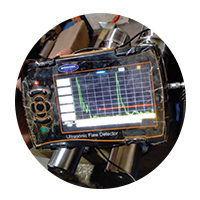
Ultrasonic Testing is done on materials to determine whether there are flaws or defects present in a material and also to determine the thickness of a material / object. UT makes it possible to find flaws inside the material. High frequency sound waves are sent into the material with an ultrasonic transducer. The ultrasound that reflects off defects in the material is made visible in a graph. UT gives insight in the depth, size, nature and orientation of the defected indications. The thickness of the material such as wall thickness of pipes can also be measured.
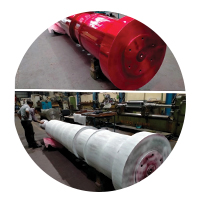
Also known as Liquid Penetrant Testing [LPT] used to locate surface breaking flaws such as cracks, porosity and other surface discontinuities. DPT can be applied to both ferrous & non-ferrous materials. It is most commonly used to detect defects in castings, forgings and weldments.
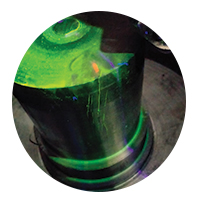
This method is applicable to all metals which can be strongly magnetized. This method is used for the detection of surface and near surface flaws in ferromatic materials.
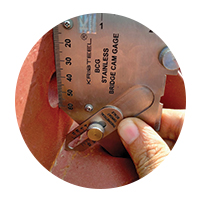
Visual Testing is based on the inspection for flaws that are visible to the naked eye and is the most commonly used NDT method. This method is used to detect visible flaws such as deformation, welding defects and corrosion.
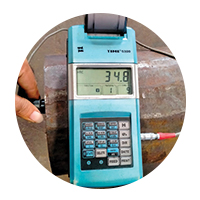
Hardness Testing is a method of NDT that involves applying a constant load via a rounded or pointed object, under controlled conditions to create an indentation in a metal surface. This is then measured to determine the hardness of the material.